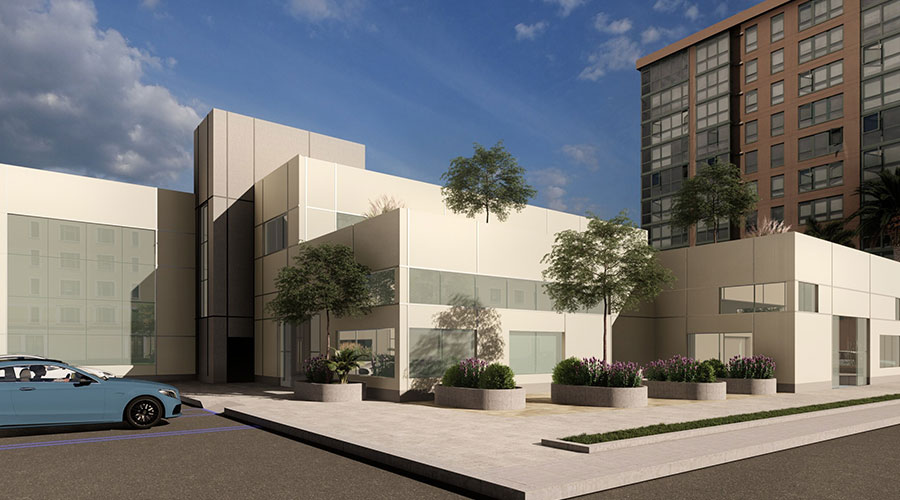New trends, pressures and strategies are emerging for architectural design in healthcare. As this happens, healthcare facilities will undergo new evolutions in their overall designs. Given this, it’s wise to consider what may come and prepare for it in the present.
Healthcare Facilities Today spoke with David Moon, FAIA, FACHA, principal at Abramson Architects, about what the future of architectural design looks like for healthcare facilities.
Healthcare Facilities Today: What are some emerging trends for architectural design in healthcare facilities?
David Moon: This has a direct impact on the design of healthcare facilities. The American Hospital Association just issued a report in May that showed that over half of the hospitals in the U.S. closed out the year in an operating loss. Due to those pressures, I think the trends for healthcare design fall into two different categories.
First, would be the hospital inpatient settings, and with those financial pressures, the trend towards creating flexible hospital spaces is becoming more of an intentional design criterion. For example, this might include designing acute around a standard module size to produce future flexibility when that area needs to be renovated to a different use later. We're also seeing universal room approaches to patient areas to try to make them more multifunctional and adaptable.
During COVID, we saw rooms and parking lots being repurposed for clinical uses that they were never designed to accommodate. So, all that experience has contributed to a rise in the design of more resilient spaces in those facilities in case of another pandemic or other natural disaster.
So, in addition to designing a more robust infrastructure, this has kind of resulted in a strategic clinical accommodation such as designing additional airborne infectious isolation rooms, or additional surge beds to accommodate spikes in patient volume. So that's inside the hospital.
Outside of the hospital, we're seeing a rise in more complex services being provided in an outpatient setting. Health systems have been deploying clinical programs to outpatient locations with lower cost centers for many years. However, what continues to change today is the increase in acuity of the services being provided at those locations due to the advances in technology we're seeing.
HFT: What are the biggest challenges you foresee in the future of healthcare architecture and how do you think they can be addressed?
Moon: We're hearing a lot about continued staffing shortages, particularly in nursing. There are various reasons listed for this, such as burnout, an aging workforce or dissatisfaction with their work environment. Hospitals are very aware of this, and they're focused on nurse retention strategies, but they're still having to hire travel nurses at a premium to provide vital services.
All of this speaks to the need to design healthcare facilities that create a supportive work environment, not only for nurses, but for all clinical staff. The design of staff amenities like nice lounges, outdoor quiet areas and other areas of respite. All these help to let staff take a break from the intensity of providing direct patient care and can help to reduce overall stress.
Related: Healthcare Experts Are Integral to Better Hospital Design
In the context of health facility design, you'll hear architects use references to on-stage, off-stage design. What this refers to is a distinction between the design of public patient and family areas as on stage and back of the house staff areas as being off stage. I've personally never been a fan of using that analogy because I think it tends to diminish the focus on the design of those back of house areas.
It's those exact areas that healthcare facilities can staff with amenities to reduce stress, promote safety and help with staff retention. In addition to amenities, we also address this challenge by centralizing multifunctional spaces that can provide staff teams with areas of privacy. Designing functional layouts that reduce staff travel distances and enhance workflows between clinical functional areas.
This approach is even more important in rural and critical access hospitals, where fewer staff are often performing multidiscipline functions. However, designing hospital spaces using a standard module size to provide future flexibility is essential to address the future challenges in healthcare. We don't even know what those challenges are yet, but what we do know is that most hospital facilities are looking at the long term.
In the case of new hospitals, generally, they’re looking at a 50 year or longer window. This requires a shift in the healthcare design mindset from how to best accommodate the current clinical program.
HFT: What strategies are being used to design facilities that can adapt to future healthcare needs and technological advancements?
Moon: The quick and low hanging fruit to answer that question would be the incorporation of shell spaces for future growth. However, that requires programming flexibility into the project early, and it does require additional initial cost. This might be a good idea at the outset of the project, but it still might not provide enough flexible space at the end of the day. In practice, we often see those shell spaces occupied with other program space before the project is even complete.
In general, I think we're looking at design approaches that provide flexibility for modular building grids that can be converted at a future date to other types of clinical service. The starting point might be a regular structural bay that works well dimensionally for diagnostic and treatment spaces, care units and other various clinic types.
Universal design approaches for clinical spaces can be designed for multidisciplinary use and provide relief for rapid response. Designers also need to anticipate the infrastructure needed to support increasingly smarter building systems and telehealth programs. The rapid advances in technology will contribute to increasing space and infrastructure requirements during the design process.
Jeff Wardon, Jr., is the assistant editor for the facilities market.

 How Healthcare Facilities Can Be Truly Disaster-Resilient
How Healthcare Facilities Can Be Truly Disaster-Resilient TriasMD Breaks Ground on DISC Surgery Center for San Fernando Valley
TriasMD Breaks Ground on DISC Surgery Center for San Fernando Valley Bigfork Valley Hospital Falls Victim to Data Breach
Bigfork Valley Hospital Falls Victim to Data Breach AI-Driven Facilities: Strategic Planning and Cost Management
AI-Driven Facilities: Strategic Planning and Cost Management  Double Homicide Suspect Hides from Police in Upstate Community Hospital
Double Homicide Suspect Hides from Police in Upstate Community Hospital